Recent Advances in Patterning Strategies for Full-Color Perovskite Light-Emitting Diodes
- PMID: 38060071
- PMCID: PMC10704014
- DOI: 10.1007/s40820-023-01254-8
Recent Advances in Patterning Strategies for Full-Color Perovskite Light-Emitting Diodes
Abstract
Metal halide perovskites have emerged as promising light-emitting materials for next-generation displays owing to their remarkable material characteristics including broad color tunability, pure color emission with remarkably narrow bandwidths, high quantum yield, and solution processability. Despite recent advances have pushed the luminance efficiency of monochromic perovskite light-emitting diodes (PeLEDs) to their theoretical limits, their current fabrication using the spin-coating process poses limitations for fabrication of full-color displays. To integrate PeLEDs into full-color display panels, it is crucial to pattern red-green-blue (RGB) perovskite pixels, while mitigating issues such as cross-contamination and reductions in luminous efficiency. Herein, we present state-of-the-art patterning technologies for the development of full-color PeLEDs. First, we highlight recent advances in the development of efficient PeLEDs. Second, we discuss various patterning techniques of MPHs (i.e., photolithography, inkjet printing, electron beam lithography and laser-assisted lithography, electrohydrodynamic jet printing, thermal evaporation, and transfer printing) for fabrication of RGB pixelated displays. These patterning techniques can be classified into two distinct approaches: in situ crystallization patterning using perovskite precursors and patterning of colloidal perovskite nanocrystals. This review highlights advancements and limitations in patterning techniques for PeLEDs, paving the way for integrating PeLEDs into full-color panels.
Keywords: Electroluminescence; Full-color display; High-resolution patterning; Light-emitting diode; Perovskite.
© 2023. The Author(s).
Conflict of interest statement
The authors declare no interest conflict. They have no known competing financial interests or personal relationships that could have appeared to influence the work reported in this paper.
Figures
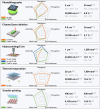

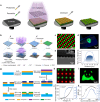


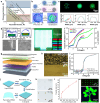

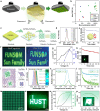

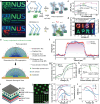

References
-
- F.Y. Wang, R. Qin, X. Wang, B. Hu, Metasocieties in metaverse: Metaeconomics and metamanagement for metaenterprises and metacities. IEEE Trans. Comput. Soc. Syst. 9(1), 2–7 (2022). 10.1109/TCSS.2022.3145165
-
- J. Yang, M.K. Choi, U.J. Yang, S.Y. Kim, Y.S. Kim et al., Toward full-color electroluminescent quantum dot displays. Nano Lett. 21(1), 26–33 (2021). 10.1021/acs.nanolett.0c03939 - PubMed
-
- J. Yang, J. Yoo, W.S. Yu, M.K. Choi, Polymer-assisted high-resolution printing techniques for colloidal quantum dots. Macromol. Res. 29(6), 391–401 (2021). 10.1007/s13233-021-9055-y
Publication types
LinkOut - more resources
Full Text Sources
